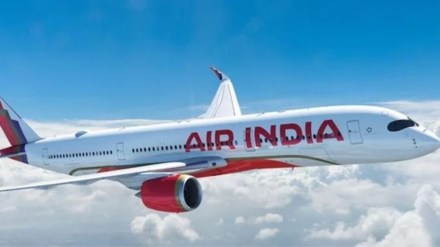The Air India Amritsar-Birmingham flight on Sunday faced an unusual situation as the crew of the AI-117 flight noticed that the Ram Air Turbine (RAT) was deployed. Taking prompt action, the pilot ensured the safe landing of the plane, but the return flight was cancelled as the aircraft was grounded.
The officials said the decision was taken to thoroughly check the plane and to ascertain how the RAT deployment took place. Meanwhile, the Director General of Civil Aviation (DGCA) has taken a serious note of the incident and ordered a probe into the same. However, the event has sparked discussions as the RAT deployment was also noticed in the case of Air India plane’s crashing near Ahmedabad airport in June this year.
Coincidentally, the Amritsar-UK flight was a Boeing Dreamliner 787-8 aircraft, the same model that was involved in the Ahmedabad crash.
Pilots’ body raises concern with DGCA
Meanwhile, the Federation of Indian Pilots (FIP) has taken cognisance of the incident, and said they have written an email to the person, who is in charge of air safety in DGCA. Speaking on the incident, FIP President Captain CS Randhawa said that the mail has also been marked to DG DGCA, DG AAIB and the Secretary of Civil Aviation.
“The incident occurred on the 4th of October on a Boeing 787 aircraft. Registration was Victor Tango Alpha November Oscar. It was a flight from Amritsar to Birmingham. All systems were normal: the hydraulics, the electrical, and the engines were running properly. Even though everything was running properly,” Randhawa said on the incident.
#WATCH | Mumbai: Federation of Indian Pilots (FIP) has written an email to the aviation body, reiterating the need for a comprehensive inspection of the electrical systems of Boeing 787 aircraft operating in India
— ANI (@ANI) October 6, 2025
Captain CS Randhawa, President of the Federation of Indian Pilots… pic.twitter.com/2iHYcKpdpw
He mentioned that the Ram Air Turbine (RAT) got deployed between 400-500 feet on approach at a low altitude. “So nothing adverse happened and the aircraft landed safely. The aircraft has been grounded by Air India for further investigations,” he added.
Why is RAT deployment serious?
Raising his point on the deployment of RAT, Randhawa said that the Ram Air Turbine mainly deploys when there is a total failure of “all three hydraulic systems, total electrical system failure or both engine failures, and there are some other things which can deploy it”.
“This can be deployed only when the aircraft is in the air, not on the ground. To date, I have never heard of a RAT getting deployed on any aircraft where everything is normal. This is the first time I’m hearing in my 50 years of aviation experience,” he added.
Stressing that the incident should be taken very seriously, the FIP chief talked about the Air India plane’s Ahmedabad crash and said they are convinced that it could be an electrical problem that has led to the crash of AI 171 (the Ahmedabad plane crash).
“Ultimately, when the report comes, we will come to know. And I have heard that maybe by end of December, the AAIB will come out with the report. We have been requesting that the electrical systems of all Boeing 787s flying in the country be tested…The agencies should be proactive. So a further accident is avoided. That is safety. Even Boeing is not doing anything…” he noted.
What happened in the Ahmedabad plane crash?
On June 12, the Ahmedabad-Gatwick AI-171 flight crashed seconds after taking off from the Ahmedabad airport killing all but one passenger and 30 others as it crashed into a medical college.
The Aircraft Accident Investigation Bureau (AAIB) began the probe and a month later, in initial findings, hinted at pilots’ fault for the crash. It released a part of conversation between the two pilots with one of them asking the other why he did that (cut fuel engine supply), to which the second pilot responded, “I did not.”
So far, it is being reported the fuel supply to both the engines were cut that led to a sudden decline in the height of the plane.
